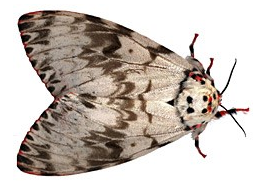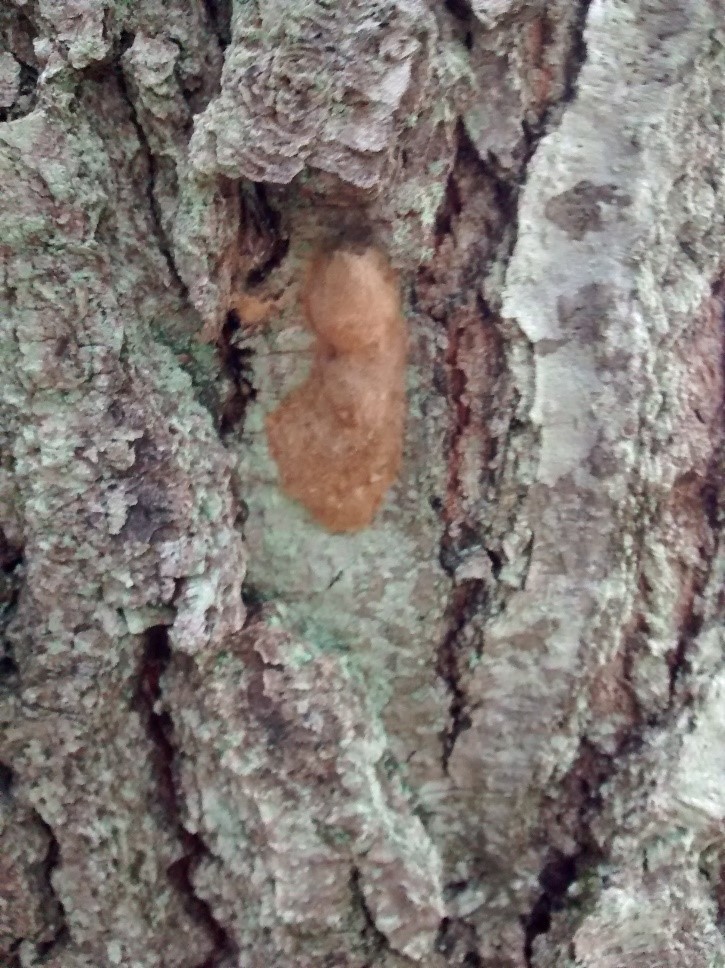2020 Gypsy Moth Follow-up
Wednesday April 14, 2021
Gypsy Moth (Lymantria dispar dispar)
In summer you will see Gypsy Moths. They are an invasive species threatening the forests in the Apsley area. According the Peterborough Naturalists, the results of 21st Annual Petroglyphs Butterfly Count noted that there were "zillions” of Gypsy Moths and there was a serious outbreak along County Road 46 this year.

Photo Credit: Gypsy Moth, Government of Canada
Gypsy moths feed on a wide variety of trees and plants but they particularly prefer oak, birch and aspen as well as sugar maple and American beech and softwoods such as eastern white pine and Colorado blue spruce.
The Gypsy Moth over-winters in the egg stage often on the bark of trees. If you destroy the eggs you can reduce the impact. Females lay eggs on trees and sometimes on buildings or other structures (e.g. trailers and vehicles) in August. In the spring, the eggs hatch and larvae (caterpillars) emerge start feeding on the foliage of the trees. If there are a lot of caterpillars, they can completely defoliate the trees. In areas where there are severe outbreaks, trees and shrubs are be completely defoliated over large areas; despite this the trees often produce a new crop of leaves by the end of the summer. The damage causes significant growth loss and consecutive years of defoliation may ultimately kill the tree.
What You Can Do to Help Protect your Trees on Your Property:
- Although theses methods only work on a small scale, you can protect your local trees very effectively.
- Remove the egg masses. The egg masses are often yellow to golden in colour and have a spongy texture. Each egg mass may contain 100 to 1000 eggs. The egg mass can be scraped off using a blunt edge. A tablespoon works fine and put them in a paper bag for disposal or place the egg masses in a container of soapy water.
- Hatching coincides with the budding of tree leaves, their main source of food. Initially, feeding occurs during the day, but as the caterpillars mature, they become nocturnal. The name ‘gypsy’ is derived from the caterpillars’ behaviour of travelling down from the leaves to more shaded areas on the trunk and ground.
- In spring and during the summer, the caterpillars can be captured using burlap wrapped around the trunk of the tree. The caterpillars become trapped in the cloth. The burlap needs to be checked regularly and the caterpillars can then be destroyed. See www.canada.ca site for details.
- For those trees with eggs too high to reach, wrap the trees with a clear packing tape, duct tape or a sticky two sided tape, a couple of feet from the ground (away from the spray of rain from ground) preventing the caterpillars from crawling up the tree. Dispose of the caterpillars (larvae stage). Although deciduous leaves are the primary food source, they will attack pines which cannot rejuvenate.
- During the summer, the moths emerge and can be captured using butterfly nets and/or pheromone traps.

Additional Information and References:
Government of Canada – www.canada.ca/en/health-canada/services/pest-control-tips/gypsy-moths.html
Ontario Federation of Anglers and Hunters – www.invadingspecies.com/gypsy-moth
Ontario Ministry of Natural Resources and Forestry – www.ontario.ca/page/gypsy-moth
Ontario Nature – www.ontarionature.org/gypsy-moth-invasion
Peterborough Naturalists – www.peterboroughnature.org